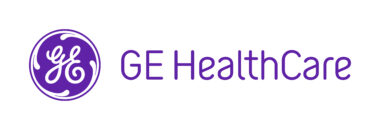The survival rate for children with a rare but deadly cancer could one day be improved by adding an existing drug – which is currently used to manage excess copper in the body – to their treatment.
The drug can be used to weaken tumours and strengthen the fighting capacity of immune cells, increasing the success rate of a cancer treatment for high-risk neuroblastoma from 10% to 50%, new research in mice led by UNSW Sydney shows.
The findings, published in Nature Communications, offer hope for those with neuroblastoma, which accounts for 15% of childhood cancer deaths.
Despite aggressive treatments, children diagnosed with high-risk neuroblastoma have a one in two chance of surviving the disease. This drops to one in 10, for children who relapse.
For those children, their last chance is Anti-GD2 antibody therapy, said lead researcher and senior report author Associate Professor Orazio Vittorio, from UNSW’s School of Biomedical Sciences and the Children’s Cancer Institute.
“It is one of the most important therapies developed, but it only works if there is a strong immune system,” A/Prof. Vittorio said.
That’s where the drug TETA (triethylenetetramine), marketed as Cuprior, comes in. While currently used to treat Wilson’s disease – a genetic disorder resulting in excess copper build up – it has been used in animal models to weaken neuroblastoma tumours and strengthen neutrophils, a type of white blood cell that helps the body fight infection and heal injuries, by transferring copper from one to the other.
“It has the double effect of weakening the tumour and empowering the immune system to be strong and fight back,” said A/Prof. Vittorio.
“When we combine it with the immunotherapy currently used for neuroblastoma, we can increase the survival rate for high-risk cases from 10% to 50%.”
A/Prof. Vittorio compares the drug’s effect to the legend of Robin Hood.
“The tumour is like this greedy rich guy who basically takes the money, or in this case copper, from the immune cells, making them very weak. Then the drug, our Robin Hood, comes in, steals the copper and gives it back to the immune cells, so they can become stronger and fight back.”
A/Prof. Vittorio stressed that increasing copper intake via dietary changes or supplements would not have the same effect.
“Never ever increase the level of copper you are taking if you have a tumour, because without this drug, all the extra copper available will reach the tumour and make it stronger.”
The researchers, from a dozen institutions including Children’s Cancers Institute, The University of Western Australia, Curtin University and the Sydney Children’s Hospital Network, tested the drug in mice, and plan to start a multi-year clinical trial next year.
Lead study author Dr Jourdin Rouaen, from UNSW’s School of Clinical Medicine and the Children’s Cancer Institute, hopes the combined therapy could one day improve the survival rate and quality of life for children with neuroblastoma.
"Copper chelation therapy represents a significant evolution from traditional cancer treatments. It’s non-toxic, has demonstrated no concerning side effects, and is already approved for use” Dr Rouaen said.
The findings also shine a light on the important role that can be played by often overlooked neutrophils, on which more research is needed to determine how they can be harnessed for immunotherapies in the future, Dr Rouaen added.
It is hoped that the drug, if found effective in clinical trials, could become a routine part of immunotherapy treatment in the next few years.
“It typically takes eight to 13 years of research to develop a new drug for cancer treatment and costs an average of $US 4.7 billion,” said Dr Rouaen.
“By repurposing an existing drug we’re saving a great deal of money and time, which is particularly crucial when we’re looking to improve treatment for this deadly childhood cancer.”
Contact details:
Kate Burke
News & Content Coordinator
UNSW Medicine & Health
P: +61 2 9348 2538
E: [email protected]


